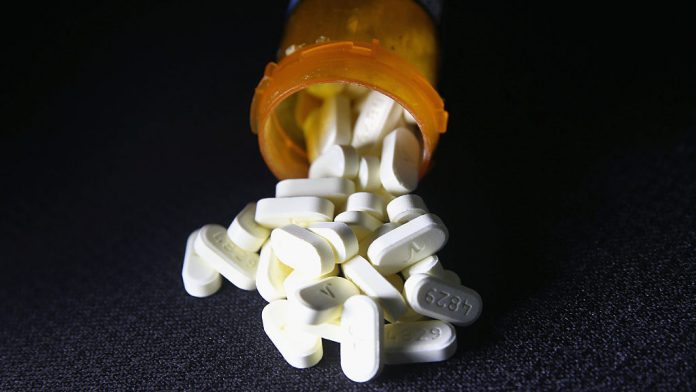
The phone rings once approximately every 45 minutes – that is how often poison control centers in the United States receive calls about children being exposed to prescription opioids, according to a study published Monday.
Over a span of 16 years, from January 2000 until December 2015, about 188,000 calls were placed to poison control centers regarding pediatric and teenage exposure to opioids, the study published in the journal Pediatrics found. Sixty percent of the children exposed to opioids were younger than 5, while teenagers accounted for 30 percent.
Pediatric exposure to opioids increased by 86 percent from 2000 to 2009 but decreased overall for all ages under 20 from 2009 until 2015, the study found. Increasing awareness among people with prescription drugs, physicians putting more thought into prescribing opioids, and prescription drug monitoring programs implemented by many states and efforts by different organizations could have contributed to the decrease in exposure, said Marcel Casavant, study author, medical director of the Central Ohio Poison Center and chief toxicologist at Nationwide Children’s Hospital in Columbus.
“We are not quite sure, and so it would be good to try to sort out of all the things that we are trying, which ones are the most effective and how can we spend more time doing that,” Casavant said.
Despite the decrease, pediatric exposure to drugs such as buprenorphine and tramadol fluctuated, with exposure increasing between some years and decreasing during other years, the study found.
The increase in buprenorphine exposure is particularly concerning because almost half of such cases require admission to a health-care facility, according to the study.
“As physicians, we need to find a balance between making sure that we are helping our patients manage their pain, and making sure we don’t prescribe more or stronger medication than they need,” said Gary Smith, the senior author of the study and director of the Center for Injury Research and Policy at Nationwide Children’s Hospital.
The most commonly cited medicines in the calls to poison control centers were hydrocodone (29 percent), oxycodone (18 percent) and codeine (17 percent). Although both children and teenagers were exposed to opioids, the severity of and reasons behind the exposures differed with age, the study found.
Children younger than 5 experienced the largest number of exposures, which is particularly dangerous because even ingesting part of a pill can be harmful to a child. Most such accidents occur because children somehow find their parents’ prescription opioids at home, give in to their curiosity and ingest the pills.
“When adults bring these medications into their homes, they can become a danger to the children that live there. It is important that these medications are stored up, away and out of sight of kids of all ages, in a locked cabinet is best,” Casavant said.
Teenage exposures were more deliberate. Most involved either risk-taking to intentionally feel the effects of opioids or were attempts to harm themselves, Casavant said. More than two thirds of the exposures among teenagers were intentional, and the opioid-related suspected suicide rate rose by 50 percent among teenagers over the 16-year study period.
The researchers are urging greater efforts to prevent opioid exposure to children of all ages. They also are calling for prescription opioids to be packaged in blister packs or single-dose packaging instead of loosely filled pills in a prescription bottle; the more challenging packing would make accidental overdoses more unlikely.
(c) 2017, The Washington Post

